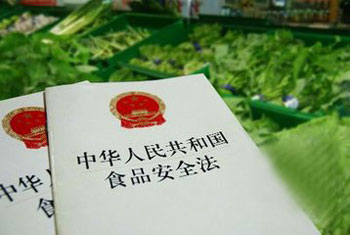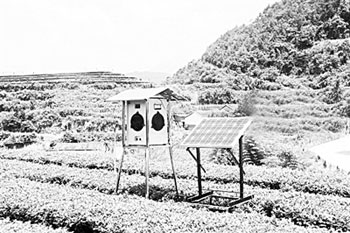80% of the open space for planting mountain rice in Camellia oleifera field can be used.
Original title: make use of 80% of the forest glades--
Hundred-year-old mountain rice has a "new appearance"

Mountain rice is an ancient rice breed, and many local varieties have no name or origin. Its yield is extremely low, but it has strong drought tolerance, grows tenaciously in barren mountains, and has a small area of planting only in isolated shanzhai. With the social and economic development, most of the mountain rice has withdrawn from the land stage and disappeared in the mountains.
Halfway up the hillside of Camellia oleifera, Torreya grandis and other young forests, covered with mountain rice, every golden autumn, a bumper harvest scene. In recent years, hundreds-year-old mountain rice has begun to shine again in many places in Zhejiang. Since ancient times, mountain rice has been mostly planted in the area of Yunnan, Guizhou and Sichuan. How did it cross thousands of mountains and rivers and settle in Zhejiang? The author of this "new posture" is the mountain rice research team of Zhejiang Academy of Forestry Sciences.
Go to the mountains to find mountain rice
Camellia oleifera and mountain rice "tie the knot", this initiative was born in Wuyi County, Jinhua City, Zhejiang Province, in fact, it is no accident. Wuyi is one of the main producing areas of Camellia oleifera in Zhejiang, with a total planting area of more than 70,000 mu. Although the prospect of planting Camellia oleifera is good, there is basically no output in the first five years. Although the government has given some subsidies, it is still unable to make ends meet compared with input.
"it would be nice if we could interplant some crops." In a hospital-to-land docking in 2010, Chen Shinan, the boss of Zhejiang Bailing Valley Technology Co., Ltd., asked Qian Hua, an expert from the Provincial Academy of Forestry Sciences. Chen Shenan has more than 3000 mu of Camellia oleifera young forest, calculated that the forest empty land area, unexpectedly as much as 80%, distressed unceasingly.
This topic is of great practical significance. Camellia oleifera has been vigorously promoted in recent years. How to solve the problem of benefit and output in the early stage is the common concern of "Chen Shenan". If all crops are interplanted with vegetables and other short crops, how to solve the problem of pesticide pollution caused by pest control and weeding, and how to solve the problem of short sales period and concentration; if you grow other cash crops in dry land, how can you stand such a barren environment in Xinkai mountain area? After thinking about it, Qian Hua thought of mountain rice.
Although mountain rice is not a new thing, it has long faded from the land stage. Historically, in the area of Yunnan, Guizhou and Sichuan, due to the many mountains and complex and diverse natural environment, mountain rice cultivation was very popular, and a large number of local varieties were retained. However, with the rapid development of modern agriculture, most of the rotational land has been returned to forest, and the area suitable for mountain rice cultivation has decreased sharply, even if there is, it can only be in the remote mountain corner.
Barren and drought-tolerant mountain rice is the best choice for interplanting. Soon after, Qian Hua led a team to go to the Jinuo residential area in Xishuangbanna. According to records, this was once the most important mountain rice producing area in southern Yunnan. It was extremely difficult to find seeds. After repeatedly hitting a brick wall, everyone finally found mountain rice in a mountain forest on the Sino-Burmese border. Within a few months, the party also went deep into Guizhou, Sichuan, Fujian, Zhejiang Jiangshan, Suichang and other mountainous areas, and collected more than 20 mountain rice varieties.
After returning to Hangzhou, the research team tested the germination rate of mountain rice seeds and found that there were 15 varieties with a germination rate higher than 95%, which cheered everyone up, at least the first step was to successfully step out.
Initial results of 5-year selection and breeding
As soon as he heard about this, Chen Shinan was also interested in mountain rice and set aside more than 10 mu of young Camellia oleifera forest for trial planting. There are 280 sample plots in the experiment. the purpose is to obtain the important characteristic data of each variety, such as optimum sowing date, growth period, stability, adaptability, resistance, yield and so on. in order to explore a set of cultivation techniques and models suitable for forest-grain intercropping and promoting each other.
"unlike upland rice, mountain rice does not need water layer in its life, and its drought tolerance, barren tolerance and stress resistance are very outstanding." The reason for Qian Hua's analysis is mainly on the roots and leaves. "the root system of mountain rice is very developed, with a depth of up to 40 cm, and can effectively absorb water; its leaves have high cell sap concentration and strong drought tolerance, and can quickly restore growth even if they are subjected to drought."
It is found that it is very easy to grow mountain rice. In the process of growth, only three times of fertilizer can be applied to meet the fertilizer requirement; for weeding, plastic film mulching technology is used, which has remarkable effect and low cost; as for the prevention and control of diseases and insect pests, there is almost no need to apply medicine in the whole process because of the strong wild resistance of mountain rice. What excites researchers most is that in the year of trial planting, the harvest per mu was more than 300 jin. In the following year, Chen Shinan decided to expand the trial planting area to 500 mu.
After two years of comparative cultivation experiments, the researchers selected five mountain rice varieties, all of which are suitable for cultivation in this area. During this period, they also used modern molecular markers and sequencing techniques to identify 20 mountain rice varieties and sequenced different agronomic characteristics to develop marker genes related to drought tolerance traits of mountain rice.
On the basis of previous variety selection, regional cultivation experiments were carried out on 7 mountain rice varieties this year. Qian Hua told reporters that at present, the team has collected 28 mountain rice varieties one after another, and after five years of trial planting, two varieties, "Bailinggu 18" and "Bailinggu 5," have been initially selected as the main varieties, and are entering the variety approval stage. Through the determination of the yield of more than 3000 mu interplanting base under Chen Shenan, the average yield of "bailing Valley No. 5" reached 489.7 jin per mu, and the average yield of another main variety was also 362.2 jin per mu.
There are three difficulties in popularizing mountain rice
Several mountain rice varieties selected can be said to be the dominant ones, which stood out after 48 days of high temperature and drought in 2013 and a long period of low temperature and rain in 2014. Even many old local farmers clapped their hands and said that they could still grow rice on the hillside. But Qian Hua knows that if mountain rice is to be popularized on a large scale, there are still three "obstacles" to overcome.
First of all, the planting technology needs to be improved and standardized. At present, the cultivation of mountain rice is a new thing of changing land to increase grain, and many techniques still need to be popularized and explored. For example, due to time constraints, low temperature and other reasons, some newly planted farmers did not sow and apply enough base fertilizer in time this year, and their growth at the seedling stage and heading and filling in the later stage were affected to a certain extent; the quality of management conditions had a great impact on mountain rice. in addition, there are quality selection of organic fertilizer, protection of birds and animals, and so on. Growing mountain rice seems simple, but it has a lot of skills.
The biggest headache is the problem of labor-consuming. It is estimated that it takes at least 8 workers per mu of mountain rice from planting, management to harvest. Now it is difficult to hire workers, and the asking price for wages is also very high. Although some growers realize "machine replacement" through the introduction of small rotary tillers, hole planters, rice cutters, etc., these machines are quite difficult in practical application, especially in many mountainous areas due to poor pre-finishing and many stones. it often leads to poor mechanical operation.
The third is the problem of rice quality. Qian Hua said: in the past, mountain rice was planted mainly to solve the problem of food and clothing, so according to the varieties of mountain rice collected from various parts of the country, they are mainly indica and waxy type. with the development of market economy, middle and high-end rice emerge in endlessly, in terms of taste, mountain rice is difficult to have an advantage, and the speed of rice quality improvement urgently needs to be accelerated.
At present, in order to solve the taste problem, the research team has introduced the compound mountain rice with good nutrition and taste through repeated research and proportioning and using the method of mixed configuration. Qian Hua also said that in the next mountain rice breeding, we will pay more attention to the issue of rice quality, in order to meet the needs of the market and consumer tastes, so that mountain rice can really come to the table of ordinary people.
The reporter learned that the planting area of mountain rice in Zhejiang has reached more than 8000 mu, compared with the province's 1.4 million mu mountain Camellia oleifera and Torreya grandis seedling base, the interplanting space potential is huge. At present, the research team is stepping up the cultivation and identification of excellent varieties of mountain rice. According to different needs, it will conquer it from two aspects: ordinary mountain rice based on yield and high-end mountain rice dominated by quality, and implement the quality development of mountain rice.
Related
- A course of planting techniques and methods on how to grow carrots
- How to plant the latest tulips?
- Is it better to pick tea in the morning or in the afternoon? When is the best time for tea to be picked? what is the third or fifth tea?
- Launch Yuanxiao Happy combination Haocha + Tea Yuan healthy Taste
- Penghu Tourism "Fireworks 20 Parade with You"
- 2022 West Lake Happiness holds "Digital Revitalization Voucher" and draws iphone13 and laptop.
- Banqiao Fuzhou social houses are designed to change start-up combined with police elimination to create a safe and livable environment
- The convenient measure of "mechanical weeding" in Xinbei has been abused and the Agriculture Bureau has imposed heavy penalties on the illegal land consolidation.
- Changgeng University Joins Hands with Four Memory Factories to Rescue Memory Talent Shortage
- The list of Taiwan's top 100 MVP managers is listed by the Director-General of the Farmers' Association of Sanxia District.



